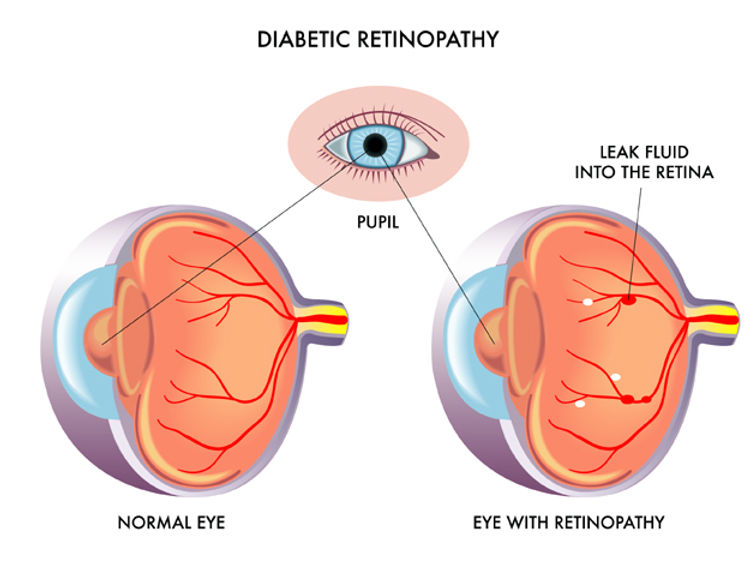
Diabetic Eye Exam
If you have diabetes, it is very important that you have an annual diabetic eye exam every year. You can have normal vision and still have complications from diabetes that can lead to vision impairment. A survey found that one-third of Americans didn’t know a comprehensive eye exam is the only way to determine if a person’s diabetes is causing retinal damage.
Eye Exam For Patients With Diabetes
Diabetic eye exam starts out as your typical eye exam with emphasis on your medical history including your visit to the primary care provider, blood sugar levels, and last hemoglobin A1C. The exam starts with chart readings, pupil response, and slit lamp exam to assess health of the front of the eye. After these initial tests, eyes are dilated using eye drops to examine the retina for diabetic changes. Once the pupil is large, we can look at the structures of your eye including, optic nerve, macula, blood vessels, and retina.
Diabetes also increases the risk of developing glaucoma, cataracts, and macular degeneration. The risk for glaucoma increases by 40% and the risk for cataracts increases by 60%.
Diabetic Retinopathy
Diabetic retinopathy is a condition that can occur in people with uncontrolled diabetes. It is caused by weakened blood vessels that leak blood and other fluids in the retina. It can cause the retina to swell, resulting in cloudy or blurred vision. The longer one has diabetes, the more likely that they will develop diabetic retinopathy.

Symptoms Of Diabetic Retinopathy Include:
The common symptoms of diabetic retinopathy are:
- Blurry vision
- Seeing spots in vision
- Missing vision in the center of your vision
Call (253) 400-2128 to schedule your diabetic eye exam today!
An annual eye exam is the only way to prevent vision loss from diabetic retinopathy. Early detection and treatment can limit the potential for significant vision loss from diabetic retinopathy.

All Eye
Care Services

Keep
In Touch

